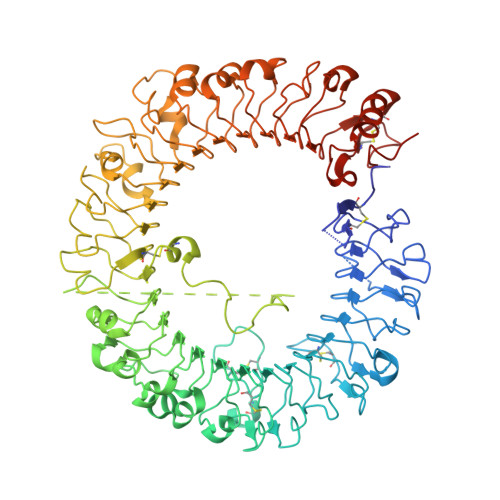Structure-Based Design of Human TLR8-Specific Agonists with Augmented Potency and Adjuvanticity.
Beesu, M., Caruso, G., Salyer, A.C., Khetani, K.K., Sil, D., Weerasinghe, M., Tanji, H., Ohto, U., Shimizu, T., David, S.A.(2015) J Med Chem 58: 7833-7849
- PubMed: 26351878
- DOI: https://doi.org/10.1021/acs.jmedchem.5b01087
- Primary Citation of Related Structures:
5AWB, 5AWD - PubMed Abstract:
Human Toll-like receptor 8 (hTLR8) is expressed in myeloid dendritic cells, monocytes, and monocyte-derived dendritic cells. Engagement by TLR8 agonists evokes a distinct cytokine profile which favors the development of type 1 helper T cells. Crystal structures of the ectodomain of hTLR8 cocrystallized with two regioisomers of a dual TLR7/8-agonistic N1-substituted imidazoquinolines showed subtle differences in their interactions in the binding site of hTLR8. We hypothesized that the potency of a previously reported best-in-class pure TLR8 agonist, 3-pentylquinoline-2-amine, could be further enhanced by "designing in" functional groups that would mimic key intermolecular interactions that we had observed in the crystal structures. We performed a focused exploration of decorating the quinoline core with alkylamino groups at all possible positions. These studies have led to the identification of a novel TLR8 agonist that was ¡« 20-fold more potent than the parent compound and displays prominent adjuvantic activity in a rabbit model of immunization.
Organizational Affiliation:
Department of Medicinal Chemistry, University of Kansas , Lawrence, Kansas 66047, United States.





















